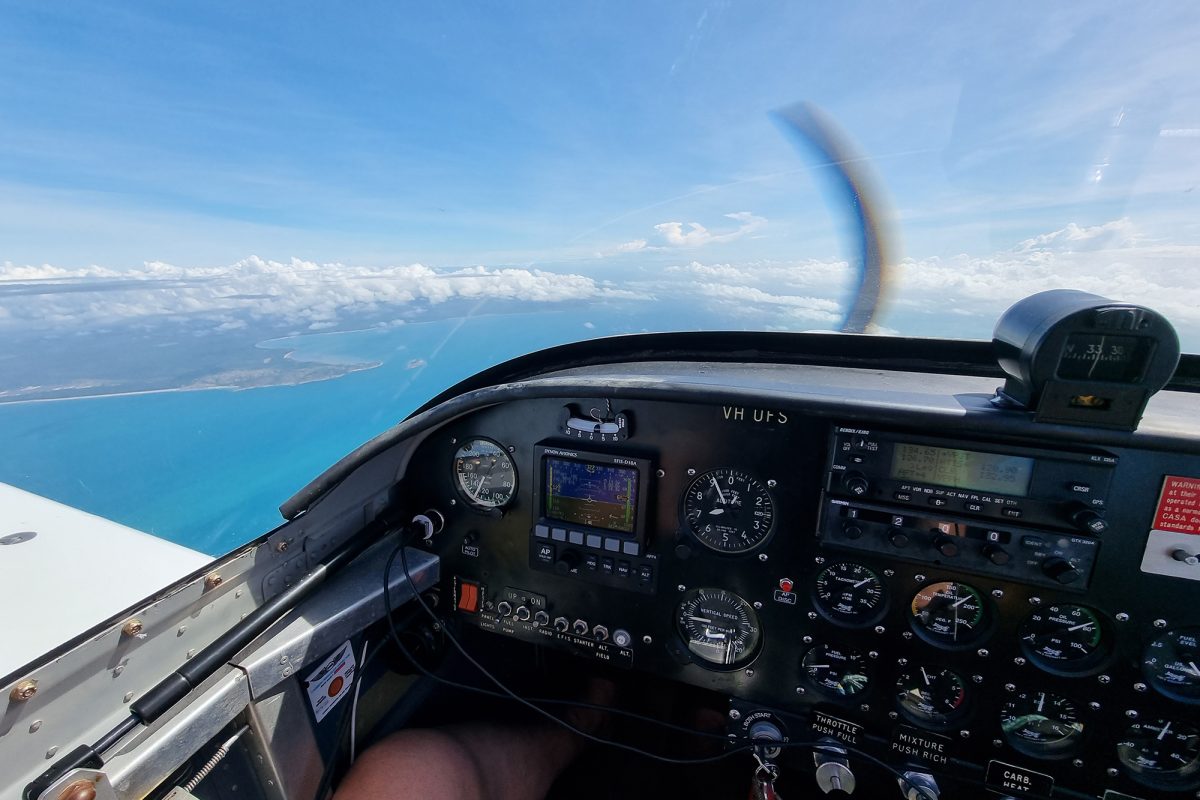Riding a bicycle is a skill we generally learn as children. Over time, we tend to ride less and less, relying on other means of transport, exercise and entertainment. When the situation arises though, we often have no trouble remembering how to ride in our adult lives.
The expression “just like riding a bike” has some merit, in terms of muscle memory, retained skill and hopefully not falling off and hurting ourselves. Flying an aircraft can be a similar experience, as we retain the basic skill of controlling an aeroplane after a period away from flying.
Unlike riding a bike though, there are challenges that occur when flying after a long break. The muscle memory remains, but the higher-level skills like decision making, making radio calls, circuit procedures and situational awareness become much rustier than the practical aircraft control inputs.
When we decide to return to flying after a break, there are many factors to consider. Let’s break them into relevant areas and include some solutions to manage them, making our return to flying safe for us, our passengers and other airspace users.
THE AIRCRAFT
If the aircraft you’re flying hasn’t been used in some time, you’ll need to confirm it is fit for flight. Ideally this review should occur well before the day of the flight, looking at factors such as:
- Tyre pressure & flat spots
- Fuel octane degradation
- Flat or low residual battery charge
- Dried out or leaky valves, hoses or gaskets
- Loss of brake or hydraulic fluid
- Airframe corrosion
- Hydroscopic oil
- Overdue maintenance
The list goes on and may be conducted using the airframe, engine and propeller manufacturer checklist, annual maintenance requirements, return to service bulletins or discussing the situation with an experienced L2 or LAME.
THE PRE-FLIGHT INSPECTION
Consider your pre-flight inspection as though the aircraft is not yet airworthy, and will only be airworthy once your inspection confirms this. This mindset forces pilots to really think about what they are looking at and confirm all aspects of the aircraft are safe and ready, including the paperwork and maintenance information.
Additionally, it can be very worthwhile to have another pilot or maintainer look over the aircraft and paperwork. We all become too familiar with our own aircraft. Personally, I like having other pilots or maintainers look over my aircraft, it provides a fresh set of eyes.
THE PILOT
After a break from flying, our muscle memory for control inputs and actions may not degrade, but our decision making, procedures and situational awareness certainly will. The significance of the break includes a variety of factors:
- Total Flying Experience (how many hours you’ve flown in total)
- Type of Experience (e.g. private flying, instructing etc.)
- Length of the Break
- Number of Landings Recently Conducted
- Type of Proposed Flight (e.g. local, long cross country etc.)
- Intention to Take a Passenger
If the pilot is a seasoned flyer with a dedication to checklists and procedures, the overall risk is likely lower than that of a newer pilot returning from a break.
Sit in the cockpit before the flight to re-familiarise yourself with cockpit layout, position of switches, practise pre-take-off and pre-landing checks. Pilots can also practise radio calls by listening to traffic at the airport or a little bit of armchair flying. Pilots can practise items like checklists, go-around procedures, radio calls and more in the armchair, at no cost.
Consider contacting an instructor and asking them to sit in, watch your conduct and prompt you if required about traffic, radio calls and circuit actions. Pilots could also discuss the proposed flight with an instructor (or another pilot) and get a second opinion on the best course of action. The point is, pilots shouldn’t just jump in the aircraft after a break, they should take steps to ensure they are competent and safe.
ENVIRONMENTAL CONDITIONS
What is the best day to return to flight after a break? Is it the next available day the pilot has, regardless of weather, wind and cloud? Or should it be the next available day with ideal flying conditions?
Pilots could aim for a weekday flight with reduced airport activity or pick a day which suits their personal flight minimums. Have they even considered what minimums they will accept? For a first flight after a long break, these could include:
- No more than 5 knots of crosswind on the preferred runway
- The longest runway length available
- No more than 10 knots of forecast wind
- Cloud base no lower than 2000ft AGL
- Temperature no higher than 25°C
- Good visibility
- Traffic activity levels at the airport
Unlike our possibly flawed decision to leap aboard a bicycle, returning to flight needs careful preparation and planning. Flying for fun doesn’t mean we don’t think like professional pilots and limit our risk as much as possible. After all, we want to enjoy the experience, and be able to use the aircraft again the next time.









